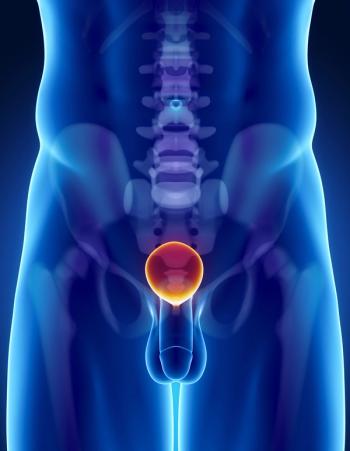
T-DXd May Maintain HRQOL, Delay Deterioration in HER2+ Metastatic Breast Cancer
Hospitalization rates appear to be comparable between patients receiving trastuzumab deruxtecan and trastuzumab emtansine for HER2-positive breast cancer in the phase 3 DESTINY-Breast03 study.
Treatment with trastuzumab deruxtecan (T-DXd; Enhertu) and trastuzumab emtansine (T-DM1; Kadcyla) maintained European Organization for Research and Treatment of Cancer (EORTC) health-related quality of life (HRQOL) measures for patients with HER2-positive metastatic breast cancer. However, the T-DXd cohort demonstrated favorable prespecified variables such as pain compared with T-DM1, according to patient-reported outcomes (PROs) and hospitalization data from the phase 3 DESTINY-Breast03 study (NCT03529110).
The mean change in EORTC Quality of Life Questionnaire Core 30 (QLQ-C30) global health status (GHS) or QOL scores from baseline were –1.88 (standard deviation, 17.60) for patients receiving T-DXd and 0.67 (standard deviation, 24.10) for those receiving T-DM1. The least squares mean change from baseline to cycle 19 of treatment in scores for this questionnaire was 1.2 (standard error [SE], 1.51) and –2.9 (SE, 2.12) for each respective treatment group. The median time to definitive deterioration (TDD) in each treatment group was 16.8 months and 14.4 months (Hazard ratio [HR], 0.85; 95% CI, 0.65-1.11).
The hospitalization rates were 6.9% in the T-DXd arm and 7.2% in the T-DM1 arm, and the median duration of hospital stay in each respective arm was 10.5 days vs 9.0 days. The median time to first hospitalization was 219.5 days (range, 0-723) for those receiving T-DXd vs 60.0 days (range, 0-399) for those receiving T-DM1.
“TDD HRs of prespecified PROs were numerically favorable in patients receiving T-DXd compared with those treated with T-DM1, suggesting that HRQOL was maintained longer by those receiving T-DXd vs T-DM1,” the study author stated. "These PRO outcomes in patients with [HER2-positive metastatic breast cancer] further support the benefit of T-DXd, demonstrated by its improved efficacy (including superior progression-free survival and overall survival) and manageable toxicity when compared with T-DM1.”
In the open-label, multi-center phase 3 DESTINY-Breast03 study, investigators evaluated the safety and efficacy of T-DXd compared with T-DM1 among patients with HER2-positive unresectable and/or metastatic breast cancer. Patients were randomly assigned 1:1 to receive a starting dose of 5.4 mg/kg of T-DXd or 3.6 mg/kg of T-DM1 intravenously every 3 weeks until disease progression or unacceptable toxicity.
The primary PRO variable of interest in this analysis was the GHS or QOL scores of the EORTC QLQ-C30. Secondary PRO variables included the physical, emotional, and social functioning subscale scores of EORTC QLQ-C30; symptom scale scores of the breast cancer–specific instrument EORTC QLQ-BR45; and the visual analogue scale (VAS) score of the EuroQOL 5-dimension 5-level questionnaire (EQ-5Q-5L).
Main analyses included the change from baseline for EORTC-QLQ-C30 GHS scores, TDD for EORTC-QLQ-C30 and select functioning/symptom subscale scores, EORTC QLQ-BR45 symptoms subscale scores, EQ5D-5L VAS scores, and time to first hospitalization and length of stay for hospitalization assessments.
Patients who experienced disease progression on or after trastuzumab plus a taxane in the advanced or metastatic setting or within 6 months following neoadjuvant or adjuvant treatment were eligible for enrollment on the study. The presence of central nervous system metastases or receipt of previous treatment with a HER2 antibody–drug conjugate were grounds for exclusion.
A total of 524 patients received treatment across 169 study sites in 15 countries, of whom 261 received T-DXd and 263 received T-DM1. Investigators reported that baseline characteristics were similar between the 2 treatment groups. As of the data cutoff date of May 21, 2021, 51.4% of patients remained on treatment with T-DXd vs 18.0% of those in the T-DM1 arm.
The median TDD was longer with T-DXd compared with T-DM1 across EORTC QLQ-C30 subscales, EORTC QLQ-BR45 symptom scales, and the EQ-5D-5L VAS.
“The EORTC QLQ-C30 GHS/QOL and all other prespecified functional and symptom-based subscales of interest demonstrated [HR] point estimates for TDD that numerically favored T-DXd, suggesting that T-DXd treatment delayed the deterioration of HRQOL in patients with [HER2-positive metastatic breast cancer],” the study authors stated.
On the EORTC QLQ-C30 symptom subscales for nausea/vomiting, the median TDD was 7.3 months (95% CI, 4.4-12.5) with T-DXd and was not evaluable (NE; 95% CI, NE-NE) with T-DM1 (HR, 2.11; 95% CI, 1.60-2.78; P <.0001). On the fatigue symptom subscale, the median TDD was 15.9 months (95% CI, 12.1-19.8) vs 10.3 months (95% CI, 6.2.-15.2) in each respective group (HR, 0.78; 95% CI, 0.60-1.00; P = .0480).
Reference
Curigliano G, Dunton K, Rosenlund M, et al. Patient-reported outcomes and hospitalization data in patients with HER2-positive metastatic breast cancer receiving trastuzumab deruxtecan or trastuzumab emtansine in the phase 3 DESTINY-Breast03 study. Ann Oncol. Published online May 11, 2023. doi:10.1016/j.annonc.2023.04.516
Newsletter
Stay up to date on recent advances in the multidisciplinary approach to cancer.


















































































